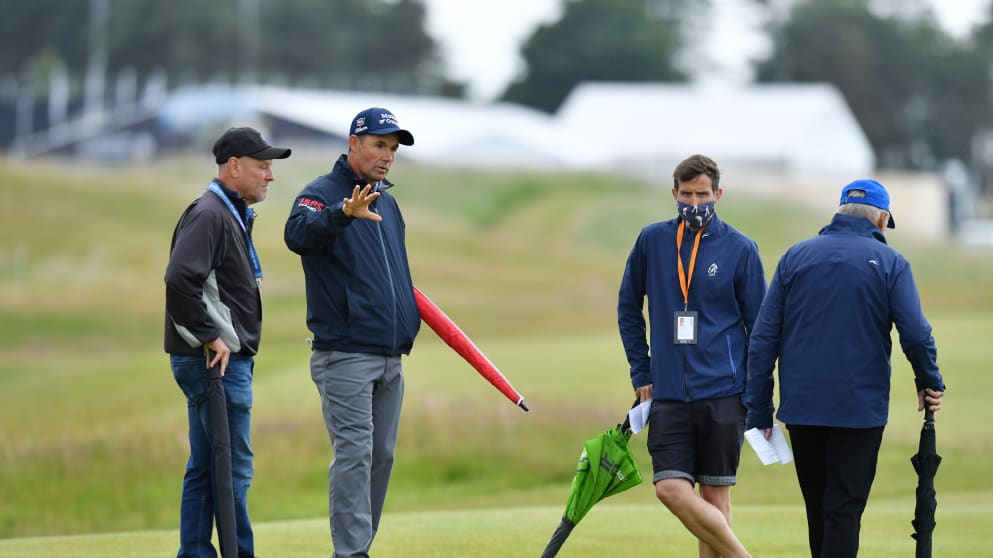The Renaissance Club is nothing if not adaptable, and CEO Jerry Sarvadi is continuing to champion change in a bid to keep up with the ever-advancing technological landscape of professional golf with the hiring of player consultant Padraig Harrington.

Earlier in the week, both Harrington and Sarvadi were joined on a walk around the course by his brother Paul and the European Tour’s Senior Tournament Director Mike Stewart and Senior Tournament Agronomy Consultant Eddie Adams as they discussed potential changes.
These discussions come just a year after Sarvadi unveiled a brand new challenge for players teeing up at the abrdn Scottish Open venue, which came in the form of a new layout, quicker greens, the rough untrampled and four new tees at the first, second, 15th and 16th that added a combined distance of roughly 300 yards.
The construction of the new championship tee at the first was to change the angle of play and provide a much-enhanced view of the landing area – and it’s that idea of viewing that Sarvadi put as one key motivator for change. The layout, which saw holes 1-7 and 10-16 of the 2019 layout flipped, was to allow the course’s most striking holes along the Firth of Forth to be presented on the back nine.
“The main reason for the re-routing was to have the holes along the water on the backside for television,” Sarvadi said of the layout last year.
“The walk from nine to ten is quite a distance, but the ladies event was spectacular and I had so many positive comments about the golf course.”
The other was distance, as Sarvadi was keen to create a different to the tournament-record low scoring in 2019.
“The most important is that the added distance will make a difference, because we’re playing the full length of the golf course. We’ve added some length with four new tees, providing options for the officials at the Tour, who will set up the course. It means they can go back if they need to or they can go forward.”
But by no means were those improvements intended to mark the end of the development to the course. In fact, they recently brought in Padraig Harrington as a player consultant to assist in the continuing development.
For Sarvadi, the idea of bringing in Harrington as a player consultant was to make sure he is including a voice for the professionals in those changes.
“As most courses do over time, we’re talking about potential course improvements to various holes,” said Sarvadi, who likened the continued development to courses like Augusta National, which also continue to adapt to change.
“When we first built the course, Tom Doak designed it in 2005, and that’s been 16 years now so things change: The ball changes, equipment changes, and so we’re trying to make sure that the course changes to keep up with what’s happening technologically around the world of golf.
“We’re no different than a lot of other courses. Augusta National is the perfect example, and the players championship at TPC Sawgrass. Wentworth made changes a few years ago and on and on, Jack Nicklaus at Muirfield Village, they all do the same thing. We’re no different, just here to improve.”

For Harrington, the opportunity is an exciting change to give his insight, but the Ryder Cup Europe Captain is equally keen to make sure that any change would positively impact the amateur experience, too.
“I’ve been hired as a player consultant here so I’m trying to give the players’ view of what they want the golf course to be like,” he said.
“So we’re just looking at a few subtle changes, maybe a few changes to the run offs, trying to make it challenging but fairer.
“I’m really interested in this. I see on golf courses where there are a couple of things that can make it a little bit more challenging for the pros but not take away from the amateurs. And you never want to take away from the amateurs. Pros are only here one week a year, so the first and foremost has to be the amateur experience and how they are enjoying it.”






